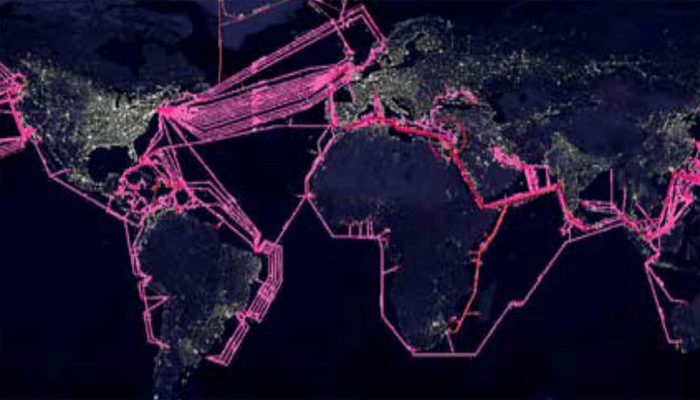It will be capable of reaching data speeds of 120 Terabits per second. The submarine Pacific Internet cable will span the Pacific and connect Los Angeles to Hong Kong. Google and Facebook are joined in the project by a subsidiary named Pacific Light Data Communication belonging to a Chinese company named China Soft Power Technology, a new player in constructing undersea cables.
It is estimated to cost around 400 million dollars and the fiber will be compartmentalized into five separate sections.
Google is reported as saying to American online media portals that each of the parties involved in building the cable will have their part of the cable to carry their traffic and do so privately.
The cable consists of five optical fiber pairs and each will have a speed of 24 terabits per second.
The cable, 12,800 km in length, once completed will become the fastest cable laid under the Pacific Ocean even putting FASTER in the second position.
For Google, this is the sixth cable that they have a stake in. The others are FASTER, Unity, SJC, MONET, and Tannat.
Google is also experimenting with increasing internet accessibility projects in developing regions like India with free Wi-Fi at railways and hopes to launch Google Station in partnership with venues like malls and restaurants.
With this cable, Google, along with Facebook, expects to bring faster internet with less lag and greater bandwidth to its users in the Asia-Pacific region, especially with rising demand for data-heavy video streaming.
Google will also look to accommodate the data needs of its Google Cloud Platform users as well.
Other noteworthy partnerships in building undersea cables include Microsoft and Facebook teaming up for a trans-Atlantic cable.
This trans-Atlantic cable is only half as long as the trans-Pacific one being built by Facebook and Google but the former is faster, reaching 160 terabits per second.
Amazon will be expected to build one too but it looks like they will be the sole investor in it, at least for now.
It’s a sign of increased consumption of data and growing markets in the Asia-Pacific region. The Pacific Ocean has seen the most investment for laying optic cables.
Since 2016 or so around 1.5 billion dollars has been invested in constructing submarine cables in the region.




